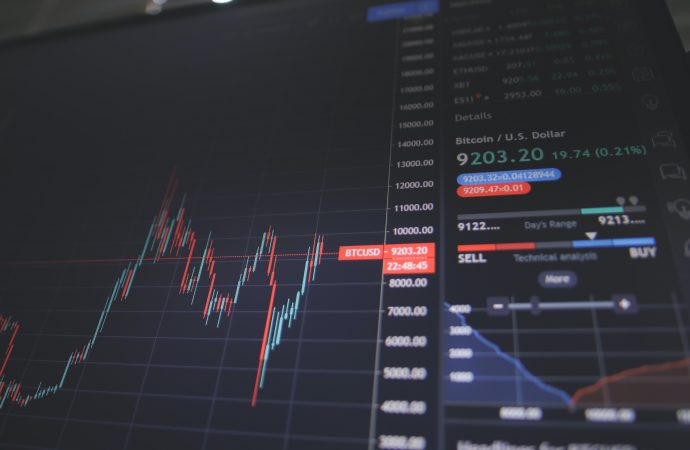The Galois hedge fund, based in Seattle, was one of the earliest adopters of cryptocurrency trading when it began in 2017. But like many early adopters, they fell victim to the pitfalls of the wild and unregulated crypto markets. In this blog post, we’ll take a closer look at what happened to Galois and their
The Galois hedge fund, based in Seattle, was one of the earliest adopters of cryptocurrency trading when it began in 2017. But like many early adopters, they fell victim to the pitfalls of the wild and unregulated crypto markets. In this blog post, we’ll take a closer look at what happened to Galois and their investments on a crypto exchange. We will also explore the lessons learned and how these issues can be avoided in the future. So if you’re an investor considering bitcoin or other cryptocurrencies, read on for valuable insight into how to manage your investments safely and securely.
What is the Galois hedge fund?
The Galois hedge fund is a cryptocurrency-focused investment fund that was caught holding assets on a crypto exchange that suddenly shut down. The incident highlights the risks associated with investing in digital assets, which are often traded on unregulated exchanges.
The Galois hedge fund was founded in 2017 by entrepreneur and investor Timo Schlaefer. The fund focuses on investing in blockchain and cryptocurrency-related projects. In 2019, the fund had approximately $40 million in assets under management.
In March 2020, the crypto exchange KuCoin announced that it was shutting down due to regulatory pressure from the Chinese government. The exchange had been operating without a license from the government.
KuCoin held assets for many different projects, including the Galois hedge fund. When the exchange shut down, it left investors like Schlaefer stranded with their assets locked up on the platform.
Schlaefer has been working to try to get his assets returned from KuCoin, but has so far been unsuccessful. The incident highlights the risks associated with investing in digital assets, which are often traded on unregulated exchanges.
What is a crypto exchange?
A crypto exchange is a digital marketplace where users can buy and sell cryptocurrencies using different fiat currencies or other cryptocurrencies. A typical crypto exchange allows users to trade a variety of popular cryptocurrencies, such as Bitcoin, Ethereum, Litecoin, and more. Some exchanges also offer more obscure altcoins.
How did the Galois hedge fund get trapped with assets on a crypto exchange?
The Galois hedge fund is a prime example of how even the most experienced investors can get caught up in the speculative frenzy of the crypto market. The fund, which was launched in 2017, had amassed a portfolio of over $50 million by early 2018. But by late 2018, when the bear market set in, that portfolio had shrunk to just $12 million.
This story begins with an all-too-common mistake made by investors in any asset class: failing to diversify. Galois had put nearly all of its eggs in one basket, investing heavily in a single cryptocurrency exchange. When that exchange began to experience liquidity problems, the Galois fund was trapped.
The crypto exchange in question is Bitfinex, which has been embroiled in controversy since 2016. In August of that year, hackers stole $72 million worth of Bitcoin from Bitfinex’s coffers. Then, in April 2019, it was revealed that Bitfinex had used $850 million from its sister company Tether to cover up those losses. This led to a loss of confidence in the exchange, and a withdrawal of funds by many investors.
AsBitfinex’s liquidity problems mounted, the Galois hedge fund found itself unable to withdraw its own funds from the exchange. By early 2019, the value of Galois’s assets had dwindled to just $3 million. The fund eventually managed to exit its position and avoid complete collapse, but this story serves as a cautionary tale for
What are the implications of this for the hedge fund industry?
The Galois hedge fund is just one example of how the hedge fund industry is getting caught up in the crypto craze. With the price of Bitcoin and other digital assets skyrocketing, many hedge funds are turning to cryptocurrencies as a way to boost returns. However, this new asset class comes with its own set of risks and challenges.
One of the biggest implications for the hedge fund industry is the potential for losses. While cryptocurrencies have made some investors rich, there have also been plenty of investors who have lost money. The volatility of digital assets can make it difficult for even experienced investors to make money, and many hedge funds are still learning the ropes when it comes to crypto.
Another implication is regulatory risk. The cryptocurrency market is largely unregulated, which means that there is a lot of potential for fraud and manipulation. This is something that the SEC has been cracking down on in recent months, and it’s likely that we will see more scrutiny from regulators in the future. This could lead to stricter rules and regulations around cryptocurrency investing, which could make it more difficult for hedge funds to profit from this new asset class.
Lastly, there is the reputational risk associated with investing in cryptocurrencies. Because this asset class is still relatively new and unknown, there is a lot of speculation and hype around it. If prices go bust or if there are major scandals involving cryptocurrencies, it could damage the reputation of hedge funds that have invested in them.
Conclusion
Despite its volatility and risk, the cryptocurrency market can offer some lucrative opportunities for investors. However, those that enter this space without being well informed of the risks are more likely to end up creating a situation similar to what happened with Galois Hedge Fund. That’s why it is important to always be aware of regulations in place, as well as actively monitor any exposure you have on crypto exchanges or investments in digital currencies. As this case has shown us, one small mistake could easily lead to significant losses if not properly managed.





















Leave a Comment
Your email address will not be published. Required fields are marked with *